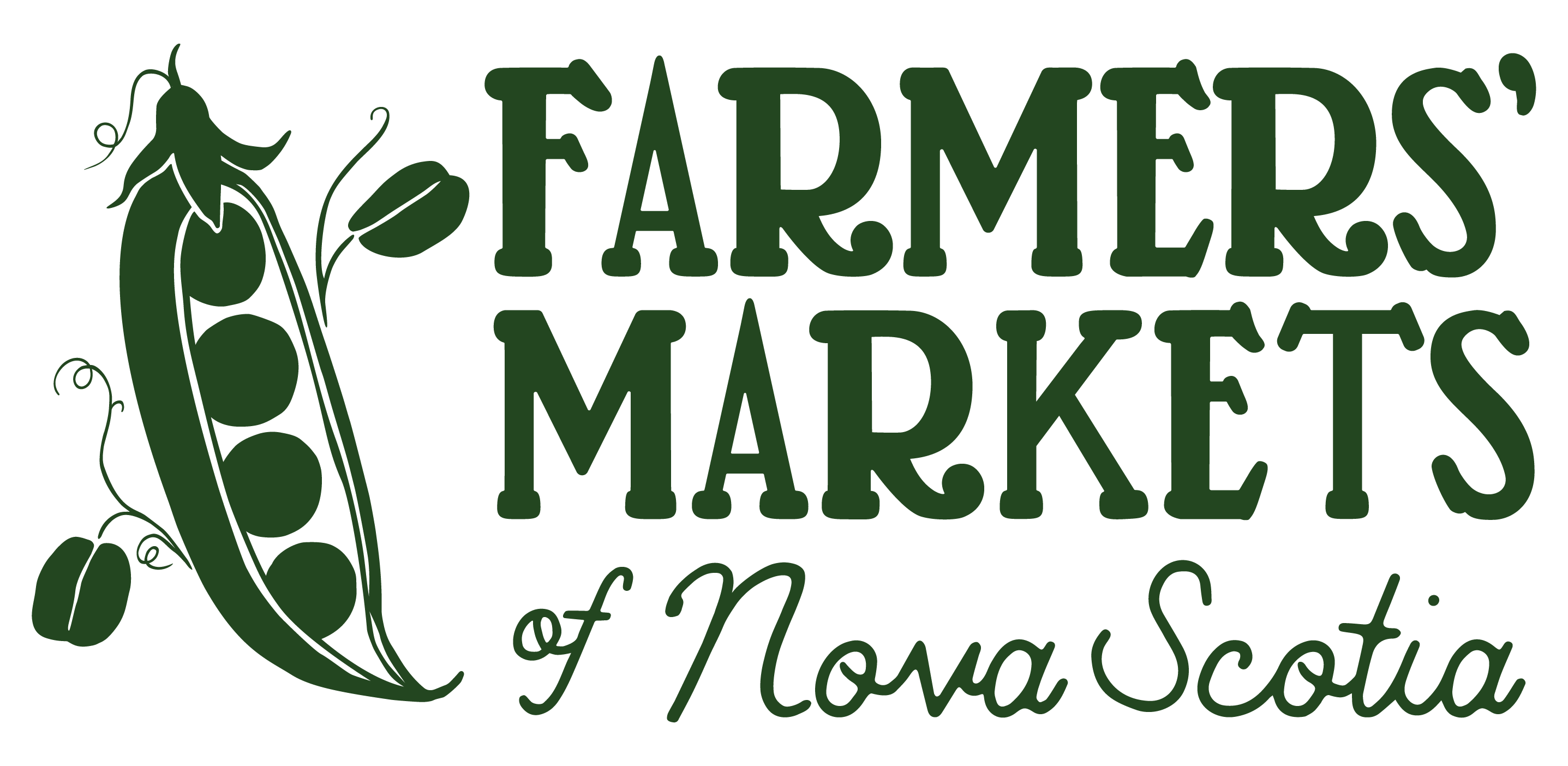Kale has become a 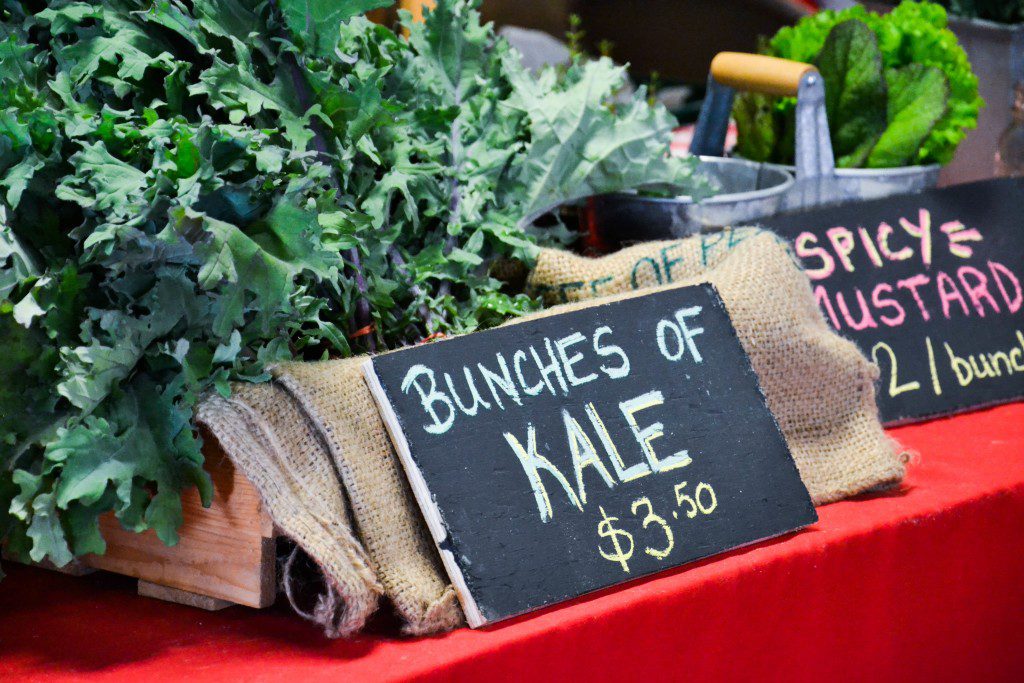 well-known and well-loved staple for farmers’ market goers and health-conscious shoppers. We can’t deny that kale is a mainstay in the farmers’ market world; it is a nutritious green vegetable with a lot to offer in terms of flavor and texture.
well-known and well-loved staple for farmers’ market goers and health-conscious shoppers. We can’t deny that kale is a mainstay in the farmers’ market world; it is a nutritious green vegetable with a lot to offer in terms of flavor and texture.
Variety is key to a healthy, well-balanced diet and making the effort to mix-things up in the kitchen will help ensure that you are receiving adequate vitamins, minerals and other nutrients that keep your body healthy and happy.
Since we’re talking variety, lets take a look at 5 nutrient-packed greens that you can incorporate into your meals and snacks.
What’s even better is that these greens are available at farmers’ markets across Nova Scotia as we head into the summer season, which means fresh, locally produced and organic veggies! (Note: check for signage at vendor booths if you are looking for certified organic produce).
These greens make a tasty centerpiece in salads, omelettes, stir-frys, pasta dishes, soups and side dishes or as a great addition to sandwiches, pizzas and smoothies – they are versatile and oh-so-tasty!
Swiss chard Swiss chard is a tall leafy green with a thick, crunchy stalk that comes in white, red, orange or yellow with wide fan-like leaves. Swiss chard leaves are tender and slightly bitter, while the crunchy stems are slightly sweet. Locally available and at its best in the Spring and Fall.
Swiss chard is a tall leafy green with a thick, crunchy stalk that comes in white, red, orange or yellow with wide fan-like leaves. Swiss chard leaves are tender and slightly bitter, while the crunchy stems are slightly sweet. Locally available and at its best in the Spring and Fall.
Prep:
1. Wash leaves under cool running water and pat dry
2. Fold each leaf in half lengthwise and cut out the thick vein in the center
3. Stack a few trimmed leaves; roll them up tightly and slice across into ribbons
4. The stems are delicious and just as worthy of being eaten as their leafy counterparts – sauté them or pickle them for a satisfying crunch
Storage:
We don’t recommend washing before storage, as the exposure to water can lead to soggy, spoiled leaves. Swiss chard can be stored in a plastic bag in the humidity drawer of the refrigerator for 5 days without wilting. If you have large batches of chard, trying blanching the leaves and freezing.
Quick nutrient breakdown: Swiss chard is a nutritional powerhouse! It is a great source of Magnesium, Potassium, Vitamin A, C, E & K and Carotenoids. It is also a good source of dietary fibre.
Two delicious Swiss Chard recipes to try:
1. Swiss Chard Rolls with Rice & Beef
2. Spaghetti with Cauliflower & Garlicky Swiss Chard Gremolata
Arugula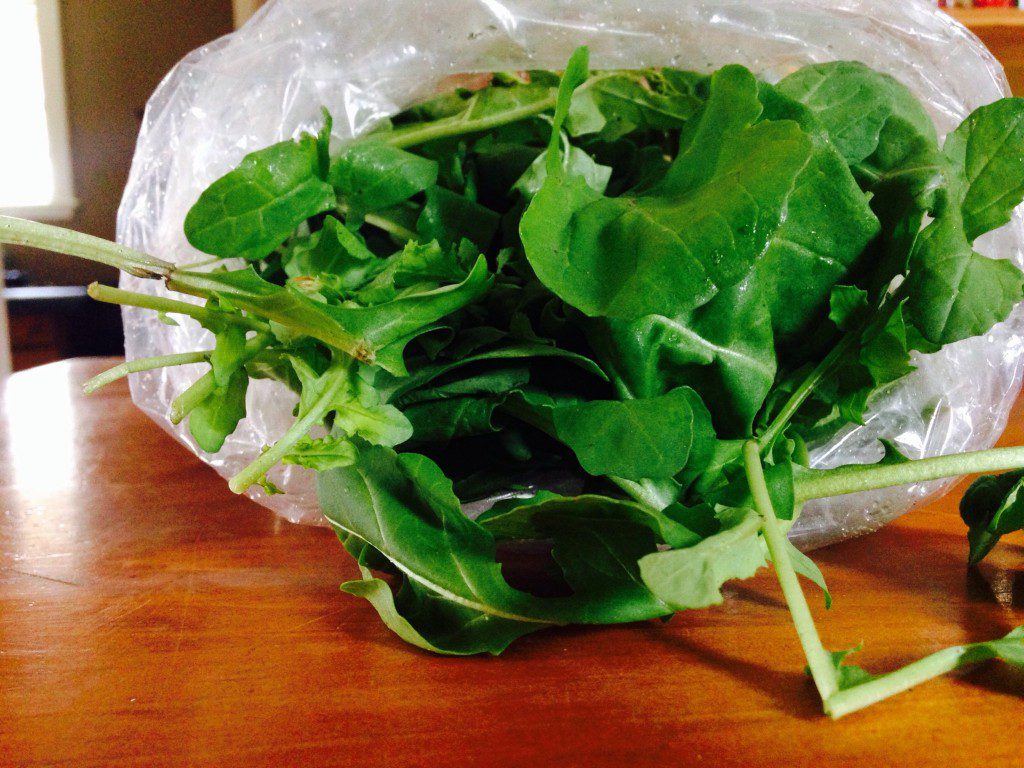 Arugula leaves (also known as “garden rocket”) are lobbed and bright green, offering a peppery, robust flavor. Small leaves tend to have a milder taste while large leaves have a bolder spicy flavor. Locally available Spring, Summer and Fall.
Arugula leaves (also known as “garden rocket”) are lobbed and bright green, offering a peppery, robust flavor. Small leaves tend to have a milder taste while large leaves have a bolder spicy flavor. Locally available Spring, Summer and Fall.
Prep:
1. Remove the tough stems before cleaning
2. Wash leaves under cool running water; pat dry or transfer to salad spinner
3. Arugula works equally well in salads, steamed, sautéed or as a garnish!
Storage:
After washing, pat dry and wrap the leaves in a kitchen towel; place in a plastic bag and store in the fridge. If you have arugula with roots, wrap the stems using a moistened paper towel, place in a plastic bag, and keep in the humidity drawer of the fridge. Store loose leaves in closed plastic bag.
Quick nutrient breakdown: Arugula is a great source of Potassium, Carotenoids, and Vitamin K. Click here for more details on what these nutrients do.
Two delicious Arugula recipes to try:
1. Turkey Panini with Apple, Cheddar & Arugula
2. Roasted Beet Arugula Salad with Goat Cheese
Spinach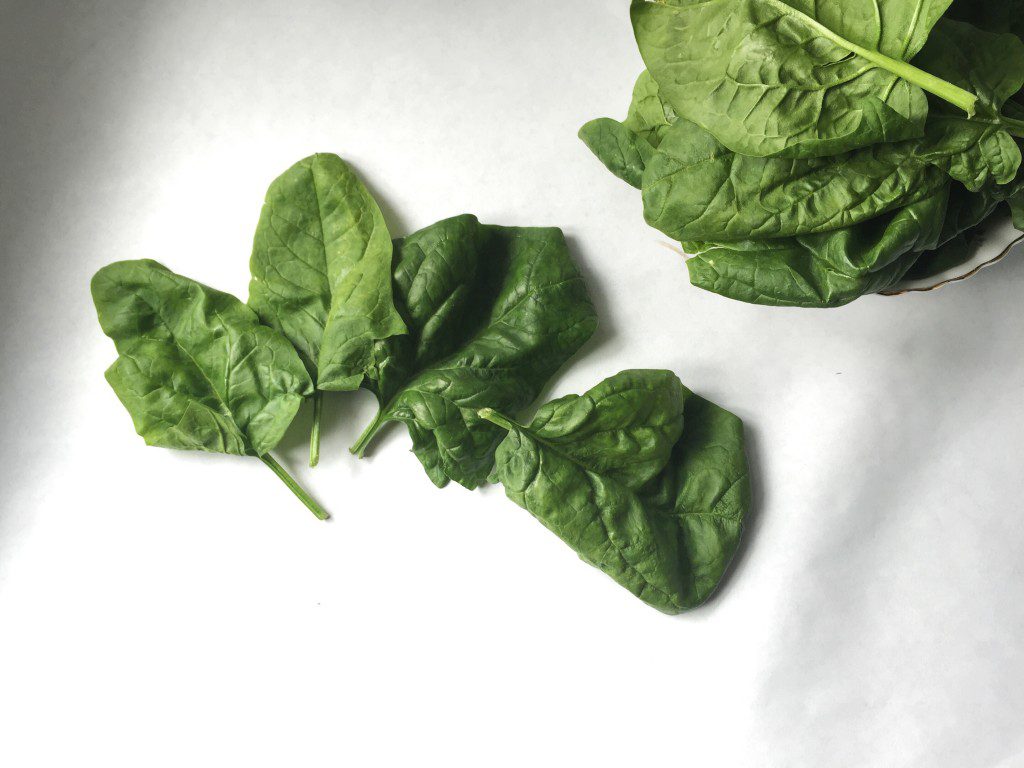 There are several varieties of spinach; typically at the market we see shiny leaves that are flat or slightly ruffled with crisp stems. Known for their distinct flavor, spinach leaves are bright green when young, deepening to a richer green when matured. Locally available and at its best Spring and Fall.
There are several varieties of spinach; typically at the market we see shiny leaves that are flat or slightly ruffled with crisp stems. Known for their distinct flavor, spinach leaves are bright green when young, deepening to a richer green when matured. Locally available and at its best Spring and Fall.
Prep:
1. Wash leaves in a colander under cool running water; drain and pat dry or transfer to salad spinner
2. Trim off tough stems or large stalks, if present
3. Leaves can be used whole, or tear them apart gently for quick salads. Note: The leaves reduce dramatically when cooked – a 450g bag is usually just enough for two people!
Storage:
Store leaves in a plastic bag with a puff of air. Washing beforehand can make the delicate leaves soggy, however if you like to wash before storing, here’s how to do it: After washing, pat dry and wrap the leaves in a kitchen towel; place in a sealed plastic bag and place in the humidity drawer of the fridge.
Quick nutrient breakdown: Spinach is a great source of Iron, Magnesium, Folate, Vitamin E & K, Calcium and Carotenoids. Click here for more details on what these nutrients do.
Two delicious Spinach recipes to try:
1. Caramelized Onion, Bacon & Spinach Pizza
2. Blueberry Spinach Breakfast Smoothie
Asian greens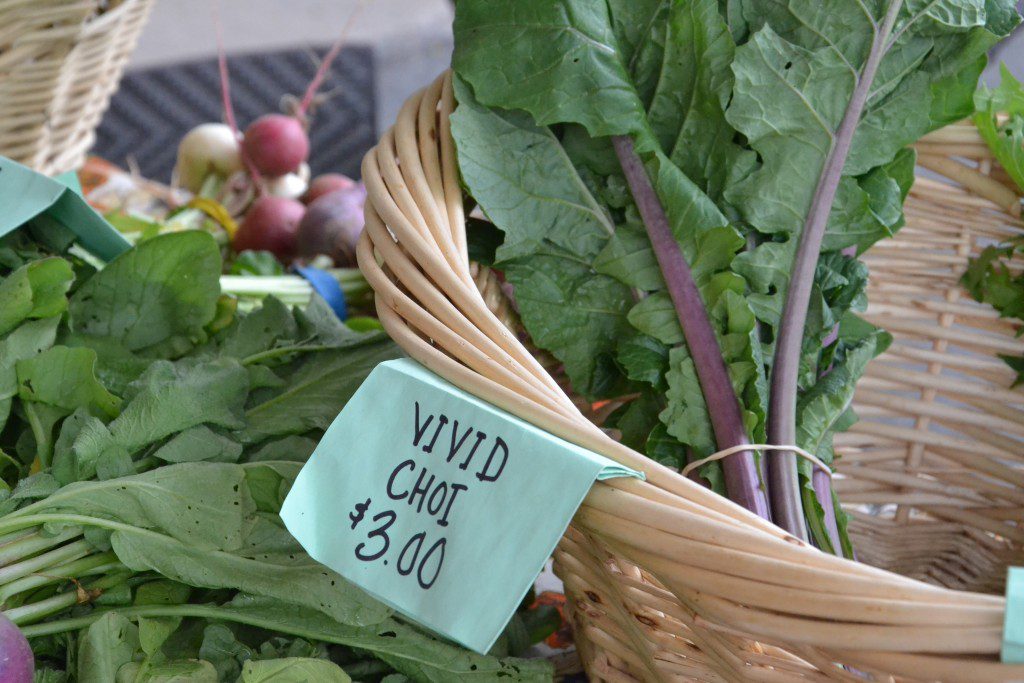 When it comes to Asian greens at farmers’ markets, there are many to choose from: bok choy, tatsoi, mizuna and vivid choi to name a few! Asian greens are excellent steamed, stir-fried, stewed, cooked in dumplings or soups, and are deliciously crunchy when served raw in salads. Click here for a visual guide to 10 varieties of Asian greens. Locally available late Winter through late Fall.
When it comes to Asian greens at farmers’ markets, there are many to choose from: bok choy, tatsoi, mizuna and vivid choi to name a few! Asian greens are excellent steamed, stir-fried, stewed, cooked in dumplings or soups, and are deliciously crunchy when served raw in salads. Click here for a visual guide to 10 varieties of Asian greens. Locally available late Winter through late Fall.
Prep:
1. When preparing Asian greens for cooking, cut off the base and separate leaves for washing
2. Greens such as baby bok choy can be simply be cut in half and rinsed
3. Wash greens under cool running water and pat dry
Storage:
Wrap the leaves in damp paper towels and place in a sealed plastic bag in the humidity drawer of the fridge. Leaves should last 4-5 days without wilting.
Quick nutrient breakdown: Bok choy is a great source of Calcium, Potassium, Vitamin A, C, K, and Folate. Click here for more details on what these nutrients do.
Two delicious Asian Greens recipes to try:
1. Spicy Peanut Tofu & Bok Choy Rice Bowl
2. Thai Stir-Fried Greens with Oyster Sauce
Collard Greens
Collard greens have broad, paddle-shaped leaves and a deep green colour with white ribs and veins. As part of the cruciferous vegetable family, collards have a chewy texture and strong alkaline flavor. Early Spring brings the most flavourful and tender collards, however they re-appear in the late Summer.
Prep:
1. Rinse leaves under cool water and pat dry
2. Chop leaves into ½-inch slices and stems into ¼-inch pieces for quick and even cooking
Storage:
Collards store better and stay fresher than most greens. Wrap leaves in moist paper towels and place in a sealed plastic bag in the humidity drawer of the fridge. They should last 4-5 days without wilting.
Quick nutrient breakdown: Collards are a great source of Vitamin A, K & C, Folate and Calcium. They are also a good source of dietary fibre. Click here for more details on what these nutrients do.
Two delicious Collard Greens recipes to try:
1. Orzo with Collard Greens, Sausage Meatballs & Sundried Tomatoes
2. Sweet Potato Soup with Collard Greens & Black Eyed Peas
Did any of those nutritious greens catch your eye? Your local farmers’ market is the go-to place to pick up fresh, picked-for-you greens – click here to find a farmers’ market near you.
Written by Aldara Mackay, Strategic Projects Coordinator
